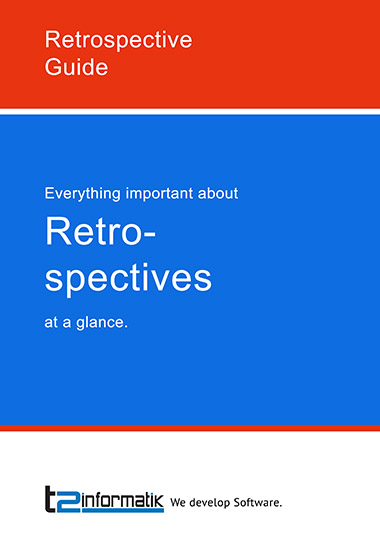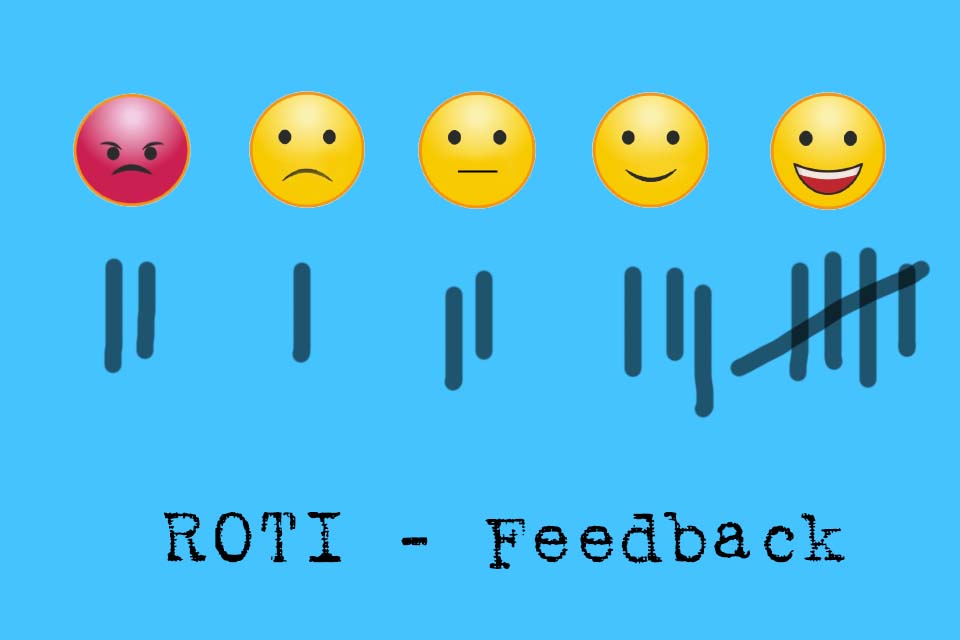What is an Amazon Retrospective?
Smartpedia: The Amazon Retrospective is a special form of recap in which each participant – similar to a product review on Amazon – awards stars for the past Sprint and writes a review.
Amazon Retrospective – The star rating of sprints
A sprint retrospective is an event in Scrum between developers, Scrum Master and Product Owner. It takes place at the end of a sprint with the aim of improving collaboration between them. The Amazon Retrospective is a special form of recap where the participants – similar to a product rating on Amazon – give up to 5 stars and write a review.
Since the past sprint is reviewed like a customer’s rating on Amazon, it is alternatively also referred to as an Amazon Review. This is misleading, however, because the review options, as they are known from Amazon and comparable portals, are merely a means to an end. The active exchange between the participants is in the foreground; therefore the term Amazon Retrospective is much clearer and should be favoured accordingly.
The Process of an Amazon Retrospective
The process of an Amazon Retrospective is relatively simple:
- Each participant of the past sprint evaluates it with a star rating.
- The range is from 1 star to 5 stars, whereby 1 star means “I didn’t like it” and 5 stars means “I liked it very much”.
- In addition to the rating, participants write a review with a keyword description of essential findings or experiences and a title that fits the review.
- As with all retrospectives, the Vegas Rule (“What happens in Vegas, stays in Vegas.”) and the Golden Rule (mutual respect and appreciation) should apply.
- Ideally, participants agree on a timebox for formulating reviews.
- Afterwards, each participant reads out his or her review and gives the number of stars.
In order to use the insights and experiences, the Scrum team should then agree on individual recommendations and measures for the next Sprint. Moderation by the Scrum Master often proves useful here.
Advantages and Disadvantages of the Amazon Retrospective
The Amazon Retrospective offers some obvious advantages:
- The process and implementation is very simple and intuitive.
- Due to the written evaluation of the individual participants, there is no influence from other expressions of opinion.
- As long as the Scrum Master as moderator does not give direction, the thoughts of the participants can flow freely.
- It is a “nice” change if the team is already very practised in conducting retrospectives.
The advantages are counterbalanced by a whole range of possible disadvantages:
- The star rating is subjective. It should and may be. Unfortunately, however, it is unclear what was actually assessed in detail: individual incidents during the sprint, individual sensitivities, processes, tools, the behaviour of stakeholders or the joint achievement of the sprint goal? Communicating a common understanding among the participants is much more difficult than it seems at first glance.
- Compared to other formats, there is no structure in the sense of “things we should keep, adapt or leave alone”. If necessary, such information has to be extracted from the reviews.
- The rating by means of the stars invites comparison with previous or upcoming reviews. It creates a metric and indirectly the risk of wanting to improve it over time. As a result, the focus of the retrospective may shift away from true improvement towards optimisation of the metric.
- The rating gives an impression, but this cannot be properly classified without interpreting the reviews. In this way, the Amazon Retrospective follows exactly the example of the big internet giant and namesake and may be similarly superficial as some of the ratings there.
- Normally, a star rating is directed at other consumers or users. In the best case, a high rating corresponds to a recommendation. However, the stars in the Amazon Retrospective do not result in recommendations, nor is the information directed at “others”. It is thus more of a “gimmick” than a “useful tool”.
And last but not least: The term “rating” does not appear once in the Scrum Guide. And there is a reason for this: “The Scrum Team discusses what went well during the Sprint, what problems it encountered and how these problems were solved (or not). This is how the team identifies the most helpful changes to improve its effectiveness.” And that’s without any rating at all.
It is advisable to agree on the meaning of individual stars together, because it makes a difference whether 5 stars stand for “I liked it a lot” or for “It was great”.
Notes:
If you like the article or would like to discuss it, please feel free to share it in your network. And if you have any comments, please do not hesitate to send us a message.
Here you will find additional information from our Smartpedia section:




